Today you’re in for an adventure because we’re travelling the Tateyama Kurobe Alpine Route across the Japanese Alps!
Nicknamed the ‘Roof of Japan’, this journey can be done starting in Toyama or Nagano and it involves a 2,400-metre elevation change as you travel across the Japanese Alps using multiple modes of transportation. This includes trains, buses, trolleys, ropeways, cable cars and even your own two feet!
This was an epic journey where we got to experience different landscapes and seasons all in one day, and we’re going to show you exactly how you too can plan the same trip!
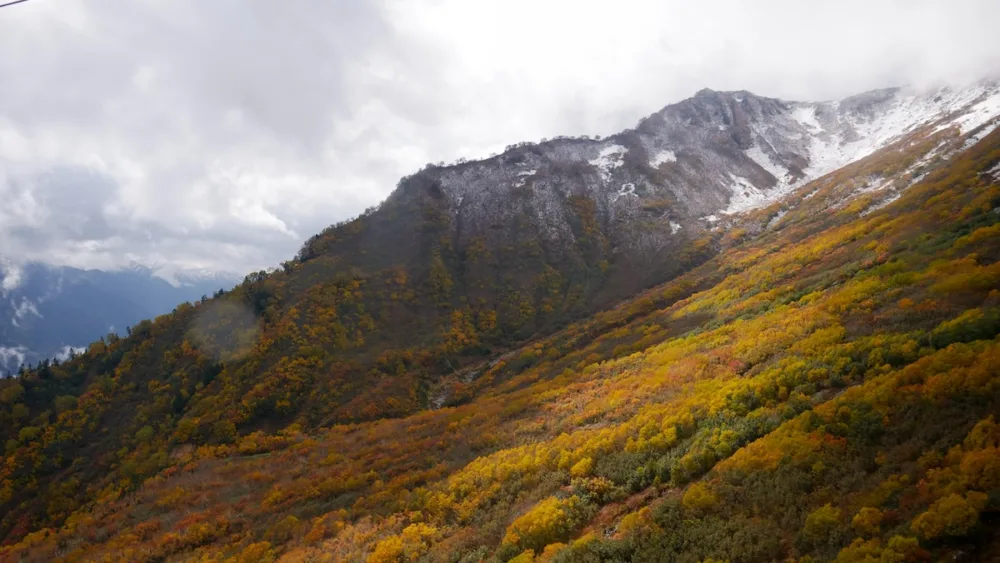
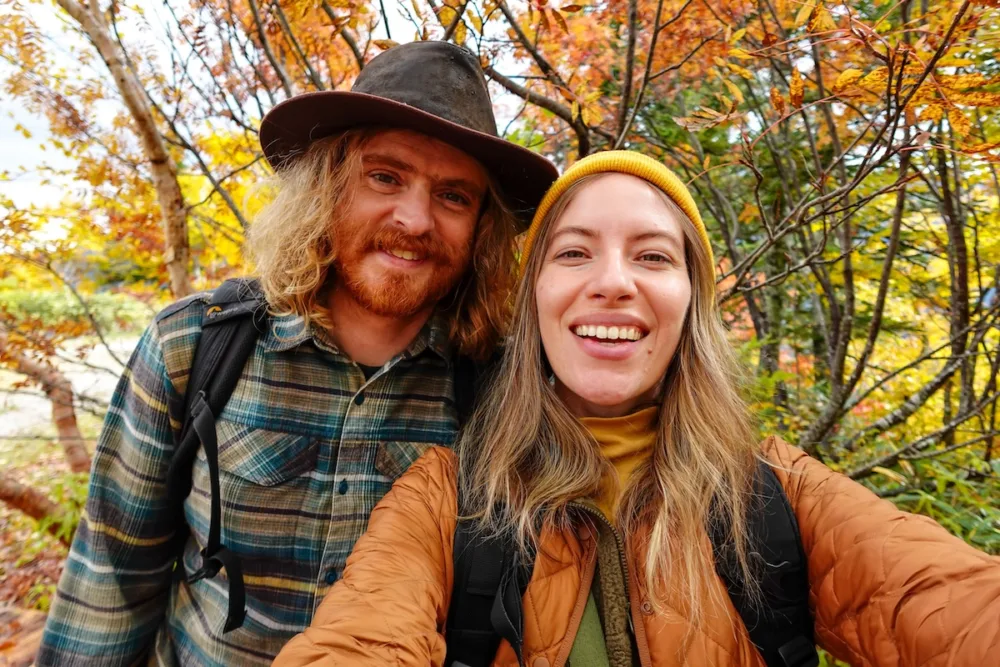
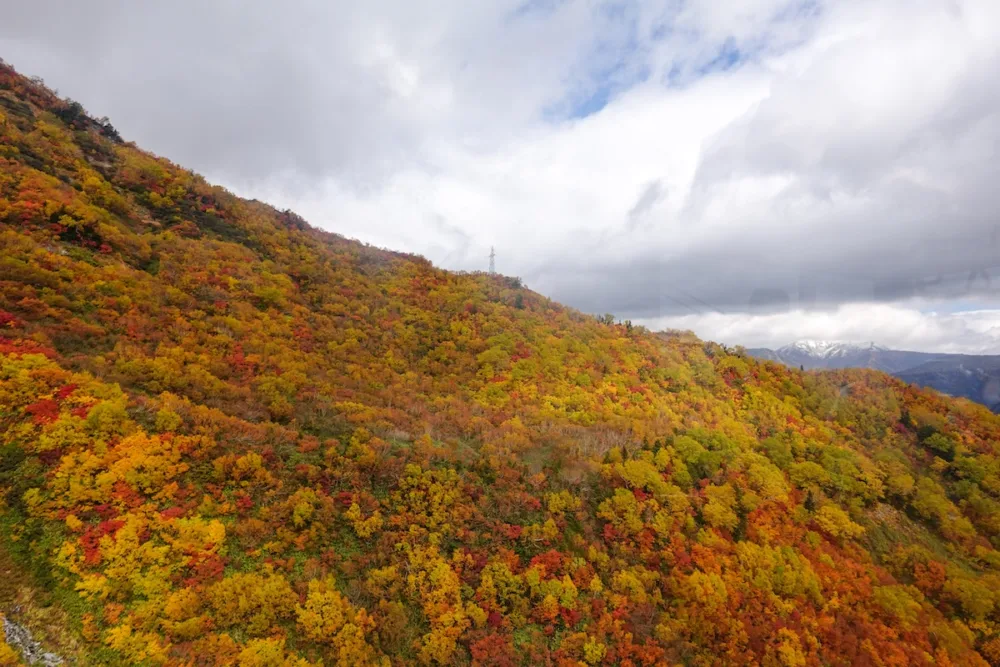
If you’d rather do the Tateyama Kurobe Alpine Route as part of a tour where you don’t have to worry about any of the details, you may want to consider this guided day tour. (This one only runs in springtime so you can see the famous snow walls!)
Alpine Route Know Before You Go
Tateyama Kurobe Alpine Route Opening Date
The Tateyama Kurobe Alpine Route is a seasonal route, so it is not open year-round. The heavy snowfall makes parts of this route inaccessible during the winter months.
The opening dates are from April 15th to November 30th. The route then closes from December 1st to April 14th.
Alpen Route One-Way
The Tateyama Kurobe Alpine Route can be done one way or round trip.
The starting/ending points are Toyama in the west and Ogizawa in the east. You can begin your journey in either direction.
We chose to travel the Tateyama Kurobe Alpine Route one way starting in Toyama and ending in Ogizawa (before travelling onward to Nagano).
The complete journey from Toyama to Nagano takes 8-9 hours depending on how long you stay at each stop and whether you go on some hikes along the way.
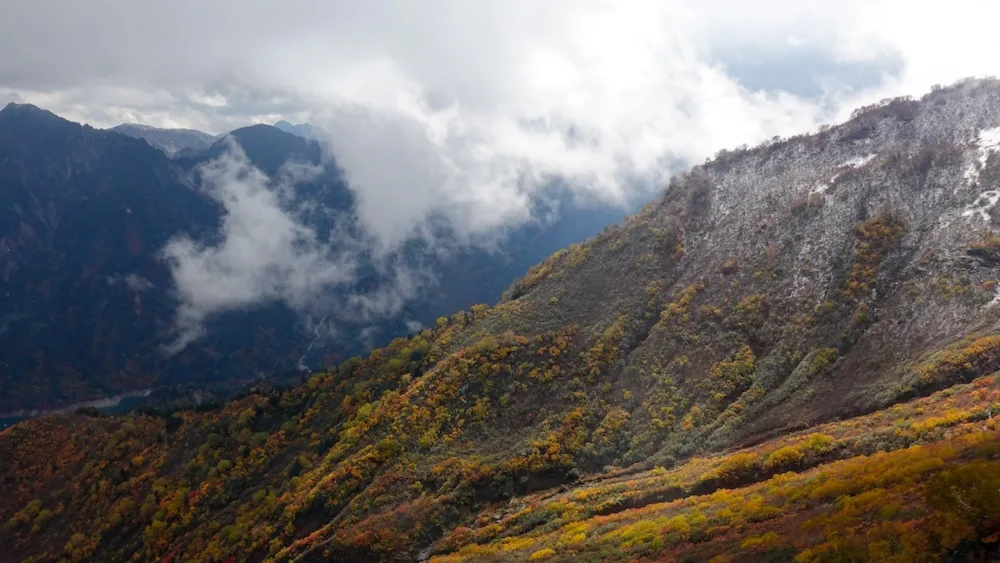
Baggage Forwarding Service
Since we were travelling the Alpine Route one way, we had luggage with us that we didn’t feel like hauling on and off 7 modes of transportation over the course of the day.
Thankfully, the Tateyama Kurobe Alpine Route offers a baggage forwarding service. Once you have purchased your tickets and gone through the first set of gates, you will see an area to the side where you can pay to have your luggage sent to the very end of the route.
The price is currently set at 3,000 yen per bag to have them sent from Dentetsu-Toyama Station to Shinano Omachi Station. We tagged them with our personal contact information and were given tickets to collect our luggage at the end of the day.
This may sound like a lot of money to have your luggage transported, but it’s honestly the best thing we could have done! It freed us up to be able to enjoy each stop without having a clunky suitcase to worry about.
We saw a few people who either didn’t know about the baggage forwarding service or opted not to use it, and it looked like a hassle. Keep in mind that some of the stops along the Alpine Route have rough terrain, there can be snow depending on the time of year, and there are some short trails and scenic viewpoints to enjoy. You don’t want to be worrying about your luggage!
You can read more about how the baggage forwarding service works here.
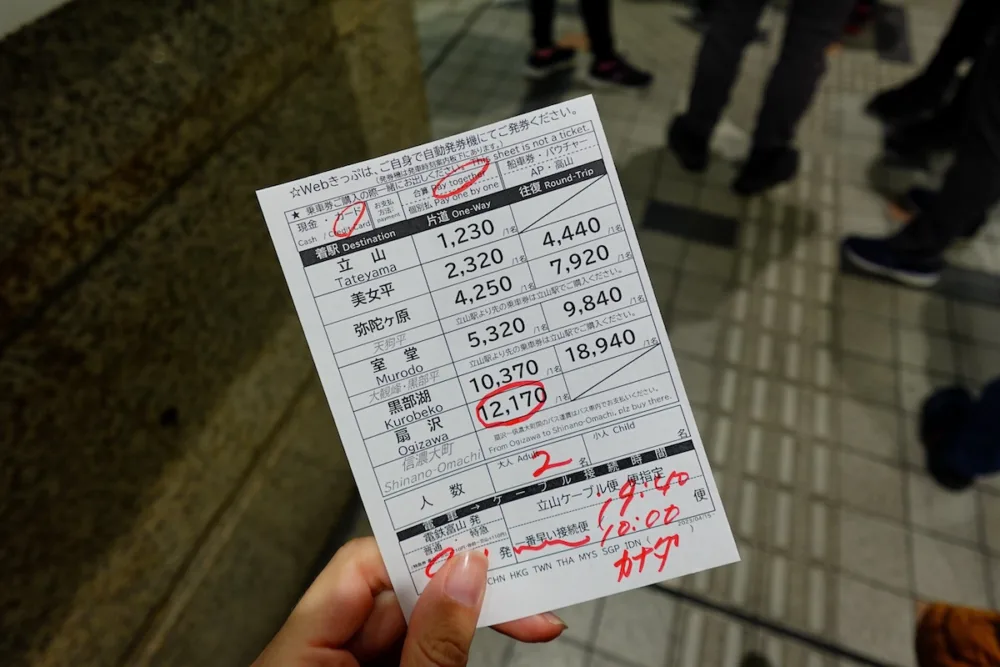
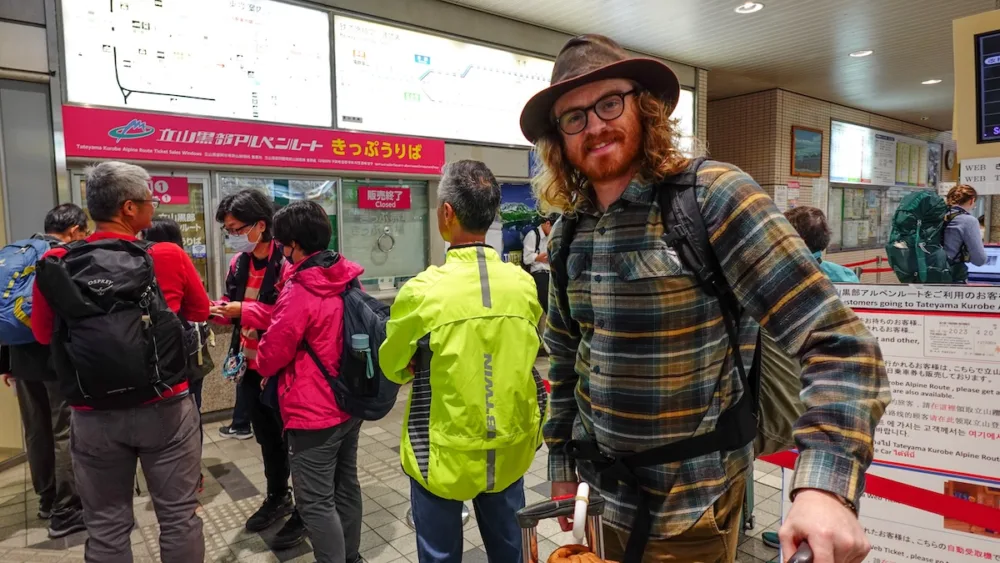
How to Buy Tickets for the Alpine Route
The biggest hassle of this trip was figuring out how to get tickets for the Tateyama Kurobe Alpine Route as foreigners in Japan! It’s a process that does involve a bit of work, but it was definitely worth it. Here are three different options for you to consider:
- Official Alpine Route Website – We were told multiple times to just buy tickets online, however, the problem is that the entire website is in Japanese (as of 2024) and even though we used Google Translate to translate it into English, we reached a point while filling out the form where it would only accept Katakana characters for our names. We tried asking for help booking tickets in 2 different tourist offices in Toyama, but that was a dead end.
- In-Person Day Tickets – The next option was to buy tickets in person which are only released for same-day travel. We were a bit worried about ticket availability since we were travelling during peak autumn foliage season, so we made sure to arrive at the station 30 minutes before the ticketing window opened and we got in line to purchase those same-day tickets. We also chose to do this trip on a weekday hoping it wouldn’t be quite as busy and that we’d have a better chance of getting tickets. This worked out for us!
- Join a Guided Tour – Another option is to join a guided day tour departing from Nagano which includes round-trip tickets for the the Tateyama Kurobe Alpine Route. This particular tour is only offered in the springtime, which is when you can see the famous snow corridor along the Alpine Route.
Tateyama Kurobe Alpine Route
Now let’s talk about the various modes of transportation you’ll get to experience along the Tateyama Kurobe Alpine Route and what to expect from each leg of the journey.
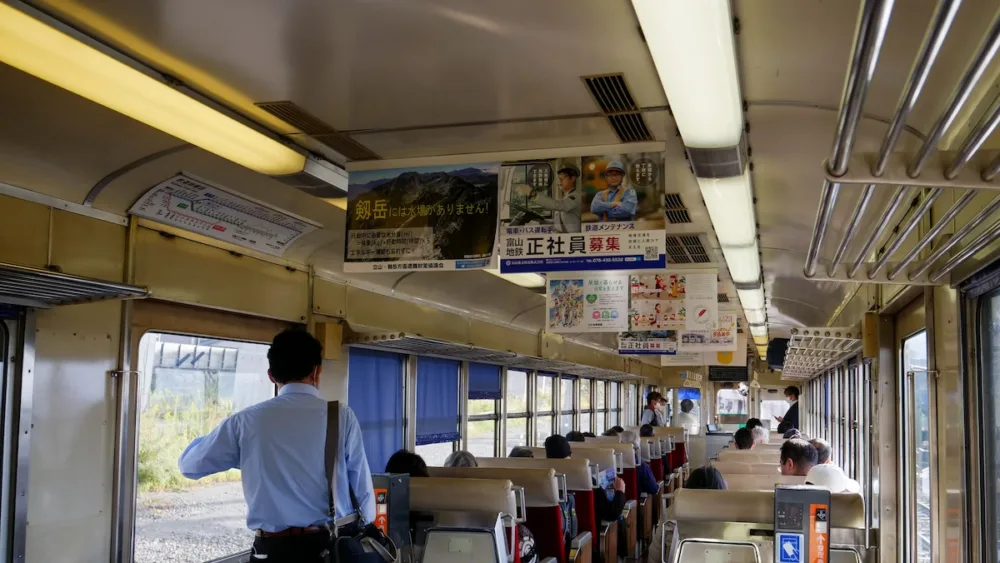
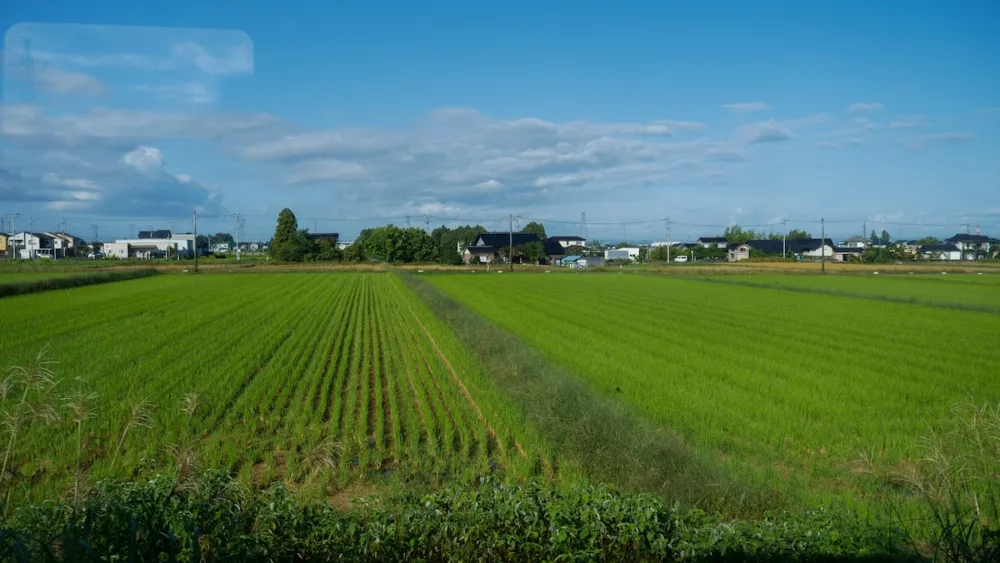
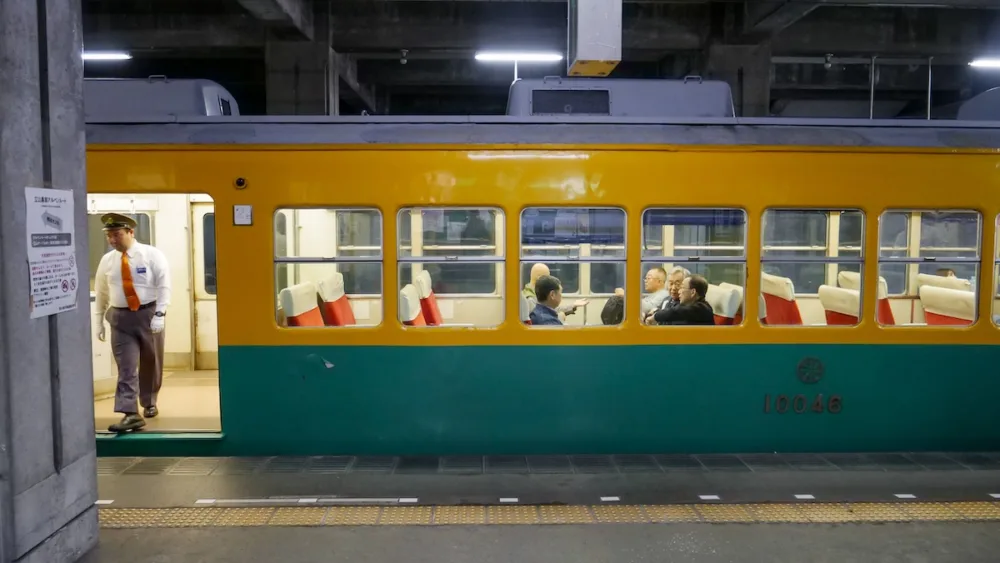
Toyama Chiho Railroad – 65 minutes
First up, we rode the Toyama Chiho Railroad, which is a 65-minute train journey. We departed from Dentetsu-Toyama Station (adjacent to Toyama Station) and travelled to Tateyama Station.
This first leg of the journey was all about getting out of the city. We watched the landscape change from urban to farm fields, and it wasn’t long before we were travelling along the Joganji River surrounded by misty green mountains.
It was a nice way to ease into our trip across the Japanese Alps!
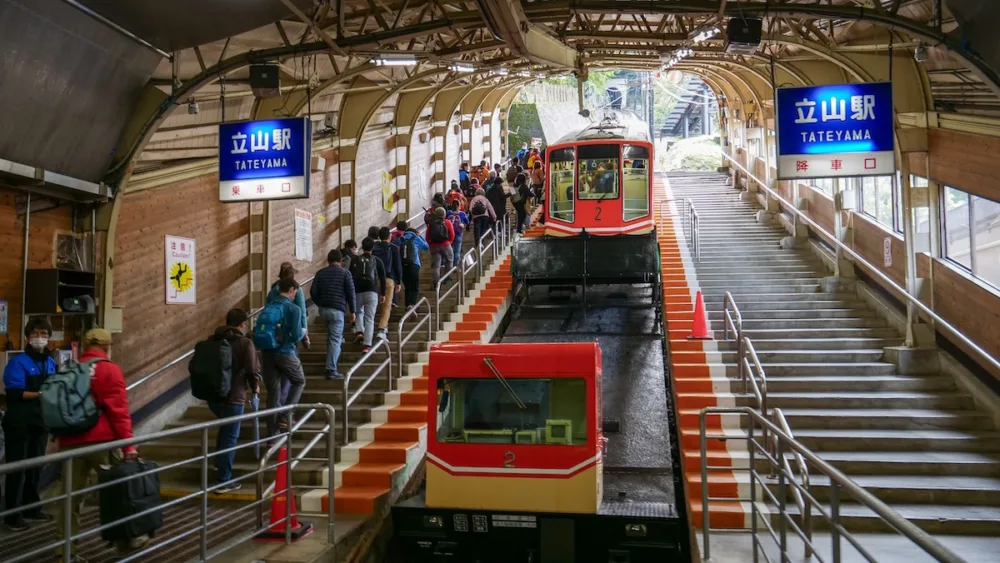
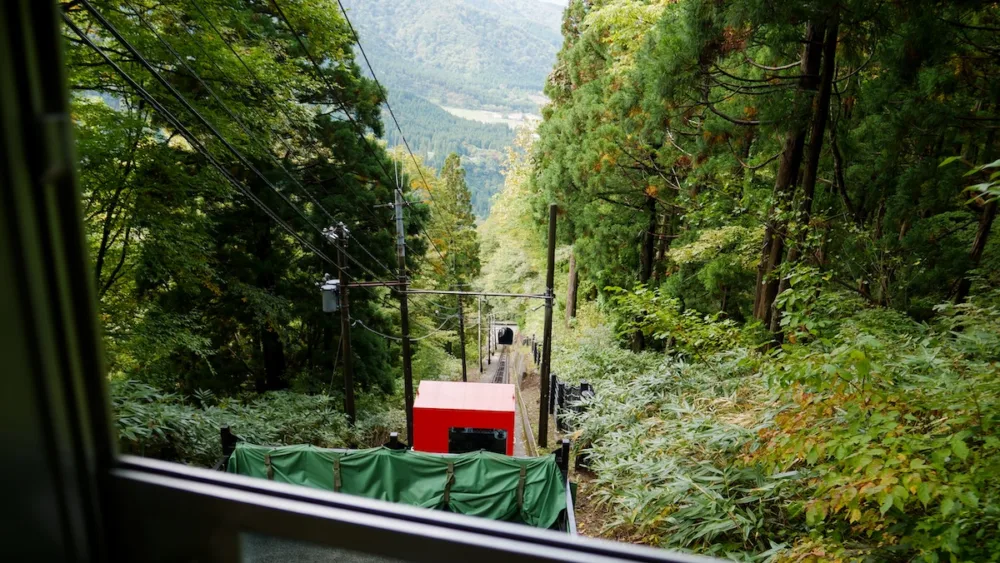
Tateyama Cable Car – 7 minutes
Once we arrived at Tateyama Station, it was time to board our next mode of transport: the Tateyama Cable Car!
The cable car is a funicular that climbs 502 meters and covers a distance of 1.3 kilometres from Tateyama Station to Bijodaira. It’s a 7-minute ride.
We were lucky enough to see a couple of Japanese macaques also known as snow monkeys – they were just chilling atop the tunnel as we journeyed uphill. The forest they call home features 200-300-year-old beech trees, as well as cedar trees that are upwards of 1,000 years old.
One of the important landmarks on this cable car journey is the Zaimokuishi rocks, which were formed by lava from the Tateyama Volcano which created pillar-like structures.
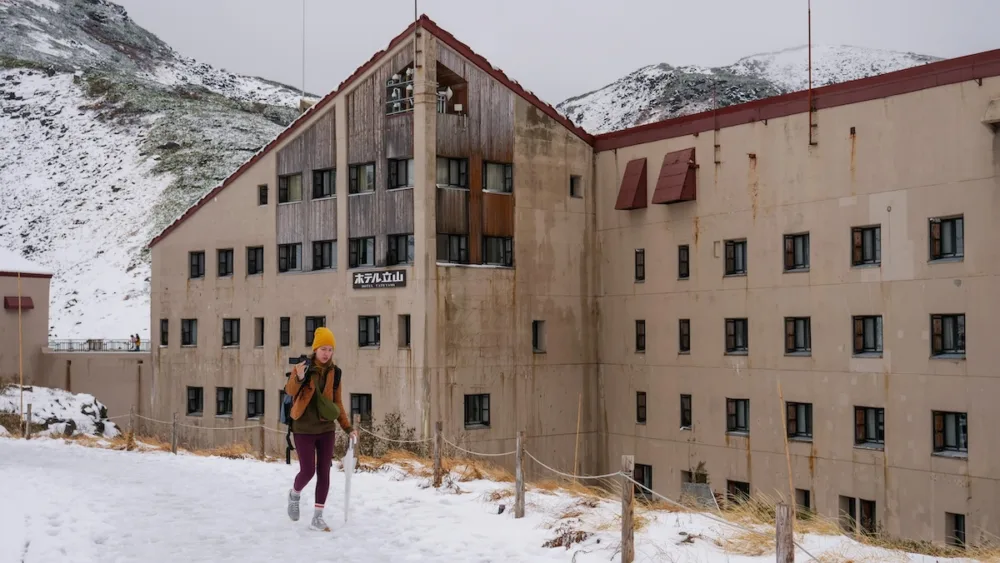
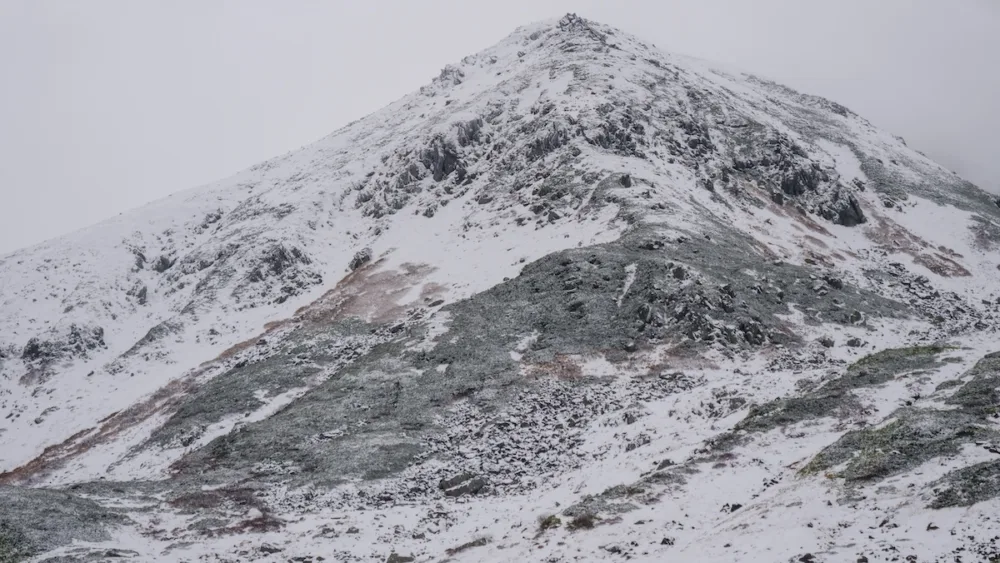
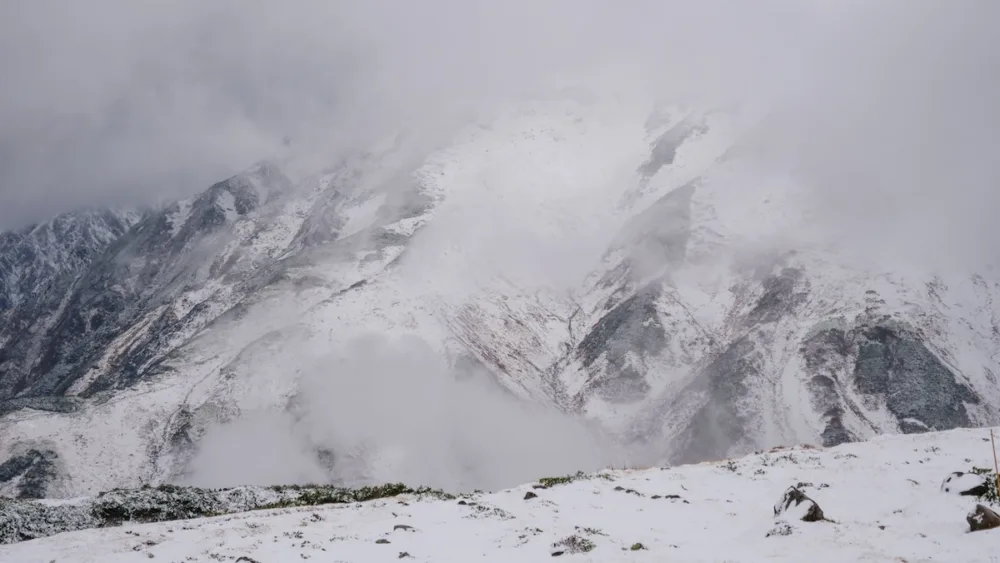
Tateyama Highland Bus – 50 minutes
Next up, we boarded the Tateyama Highland Bus to continue our journey across the Roof of Japan!
The Tateyama Highland Bus covers a distance of 23 kilometres and you get to experience an almost 1500-meter altitude change!
We went from green landscapes to fall foliage to a snowy landscape. It was quite the journey and yes, it was a very winding road.
It’s important to note that there are two different bus options here. You can either take the 50-minute express bus from Bijodaira to Murodo, or you can take the slower bus that stops halfway at Midagahara before continuing on to Murodo.
Midagahara is an alpine wetland and Murodo is the highest point on the Tateyama Kurobe Alpine Route. Both offer some nice hiking options.
Mikurigaike Pond is an alpine lake with clear waters that reflect the Japan Alps, so this is a popular spot to visit.
You can also hike Mount Tateyama, which forms part of the Tateyama Mountain Range. This is one of Japan’s Three Sacred Mountains along with Mount Fuji and Mount Haku.
This is mainly of importance for those travellers who are planning to stay overnight at one of the many mountain hotels. Both Murodo and Midagahara offer an array of accommodations, but keep in mind that if you want to spend the night, you’ll want to book well in advance as demand is extremely high!
Given how remote both of these locations are, the hotels are ryokan style and offer meals plus access to the onsen.
Spending the night in the Northern Japanese Alps:
Hotel Tateyama (Murodo) – located at 2,450 meters above sea level, this is the highest hotel in Japan! Breakfast and dinner are included. Guests have access to an onsen.
Midagahara Hotel (Midagahara) – this hotel is situated at 1,930 metres above sea level. Breakfast and dinner are included. Guests have access to an onsen.
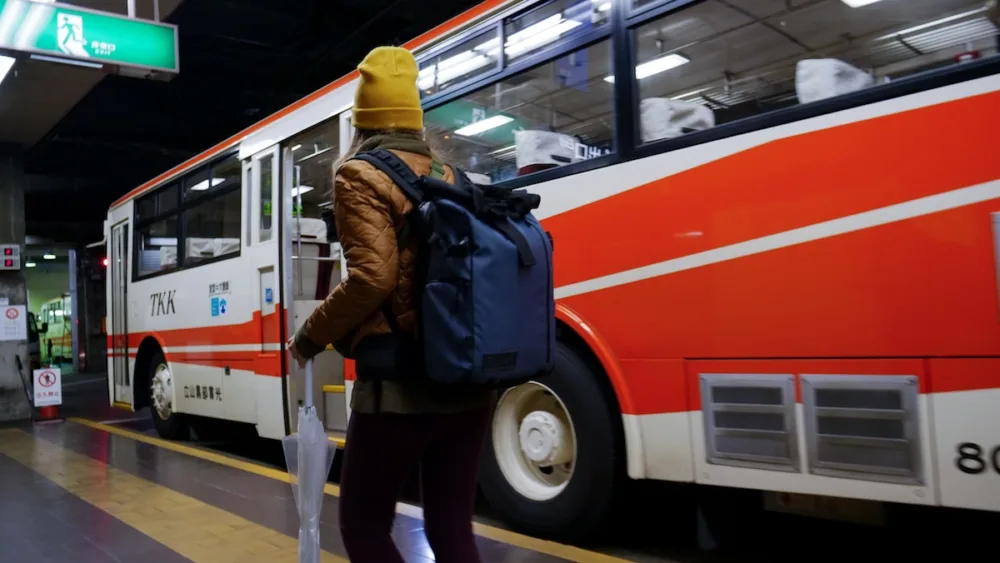
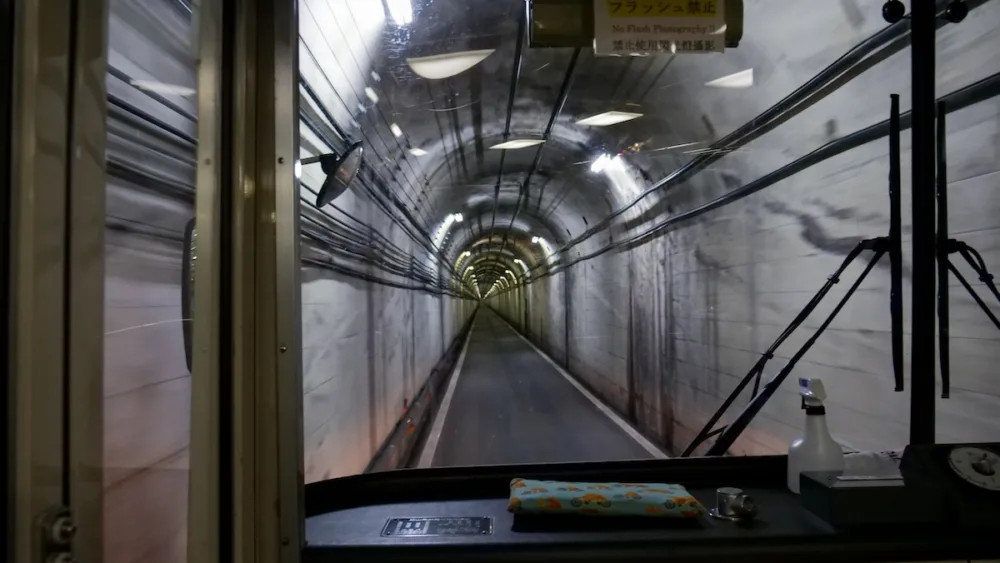
Tateyama Tunnel Trolley Bus – 10 minutes
Then, we got on the Tateyama Tunnel Trolley Bus which runs from Murodo to Daikanbo. This is a 10-minute bus ride through a narrow tunnel that crosses Mount Tateyama.
Because this is a green bus powered by electricity, it doesn’t produce any exhaust fumes.
We travelled a distance of 3.7 kilometres with an elevation change of 134 metres.
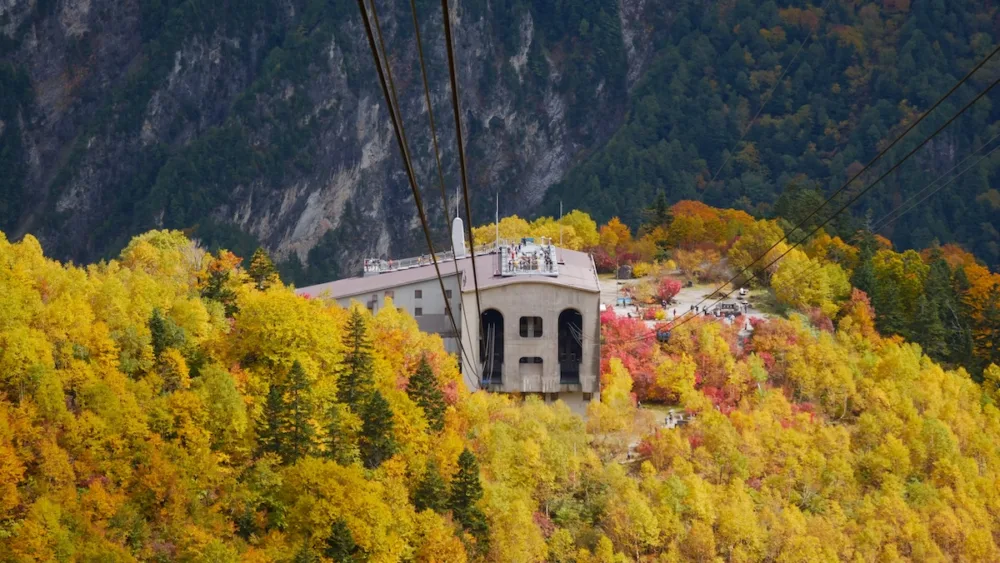
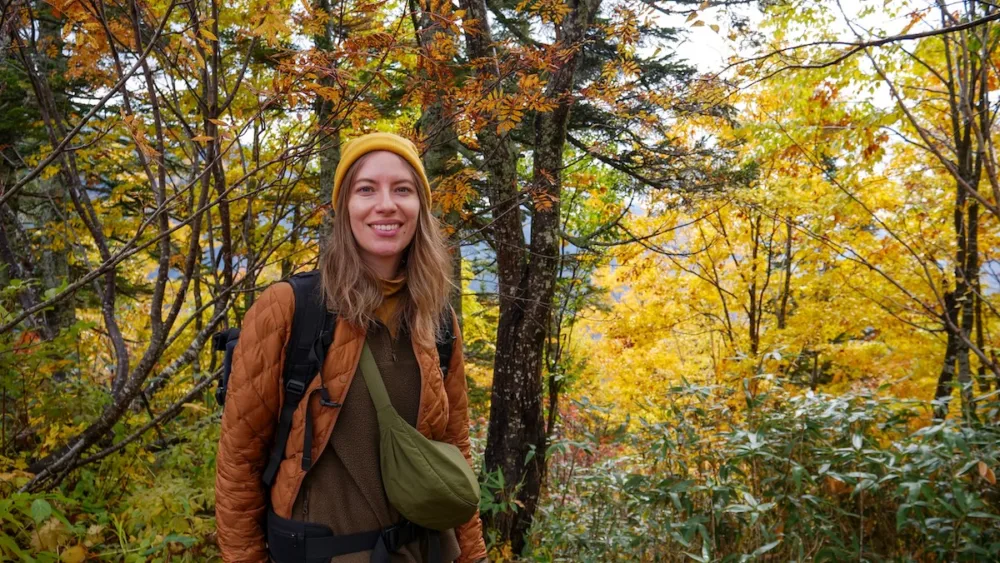
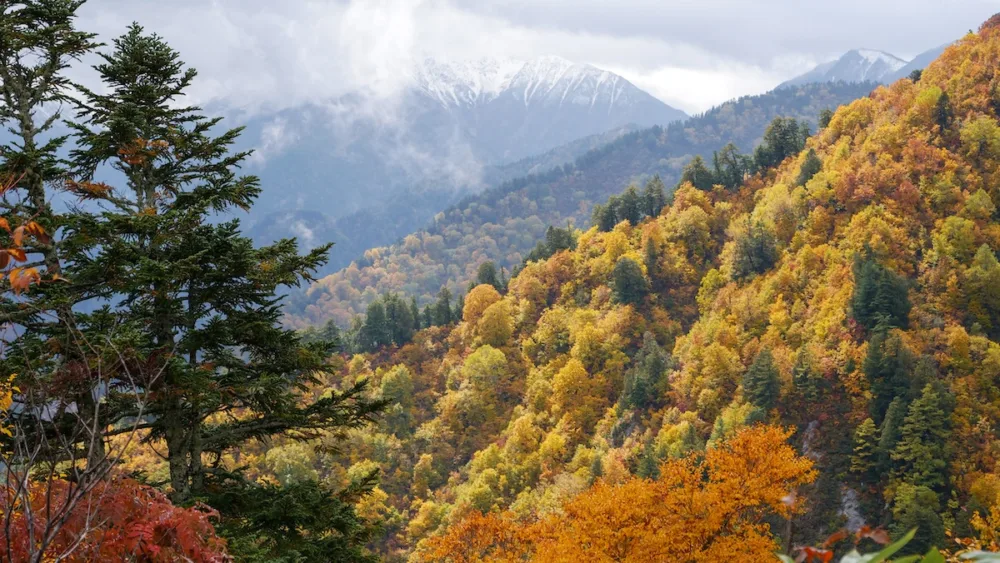
Tateyama Ropeway – 7 minutes
If there’s one mode of transportation I had most been looking forward to along the Alpine Route, it’s the Tateyama Ropeway!
The Tateyama Ropeway covers a distance of 1,700 metres without the use of a single pylon along the way (those are the columns you typically see when you’re riding a cable car, chair lift or gondola). This is the only such cable car in Japan, which makes it pretty unique!
This leg of the journey takes you from Daikanbo to Kurobedaira and it’s a 7-minute trip with an elevation change of 488 metres.
This is the part of the journey where you get to enjoy those epic alpine views and because we were doing the journey in mid-October during peak autumn foliage season, we got to feast our eyes on an explosion of colours: amber, ochre, pumpkin, burgundy and maroon!
Everyone on the ropeway was ooh-ing and ahh-ing at nature’s spectacle in this corner of the Japanese Alps.
Once we arrived, we enjoyed the views from a few different vantage points and snapped lots of photos. You can even go up the Kurobedaira Panorama Terrace where you have a viewing platform that offers 360-degree views of the surrounding area.
If there’s one place that’s worth lingering along the Toyama Kurobe Alpine Route, I would say this stop is it.
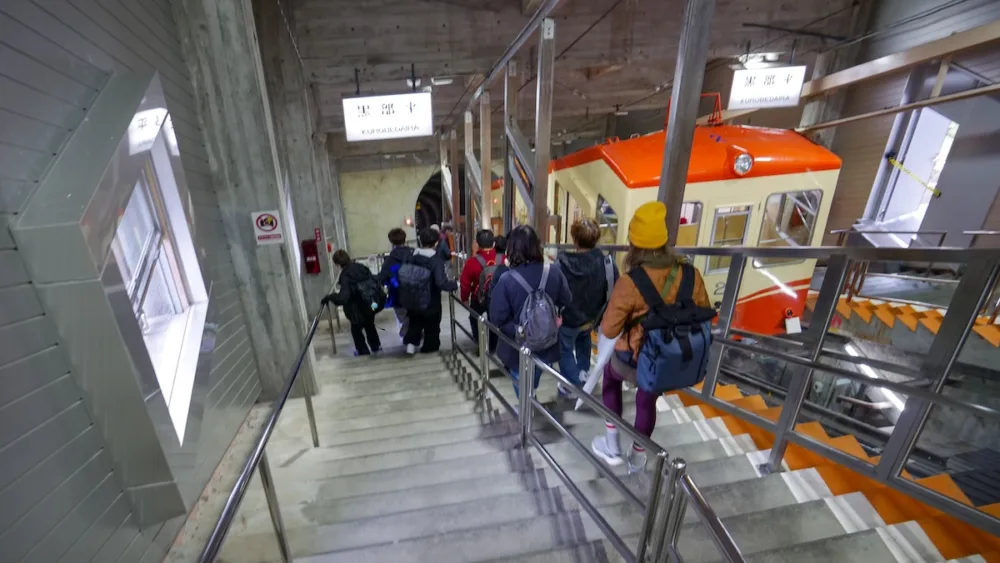
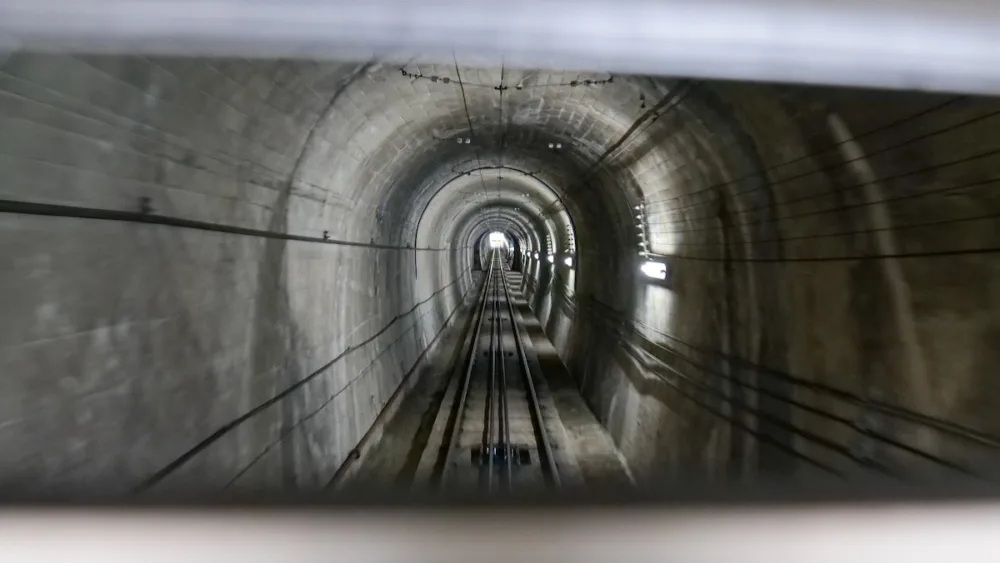
Kurobe Cable Car – 5 minutes
Then, it was time to ride the Kurobe Cable Car from Kurobedaira to Kurobeko. What’s unique about this mode of transportation is that it’s the only underground cable car in Japan, meaning it is unaffected by the heavy snowfall in the region.
This was the shortest journey on the Alpine Route; we travelled 0.8 kilometres, had an elevation change of 373 metres, and the ride only took 5 minutes.
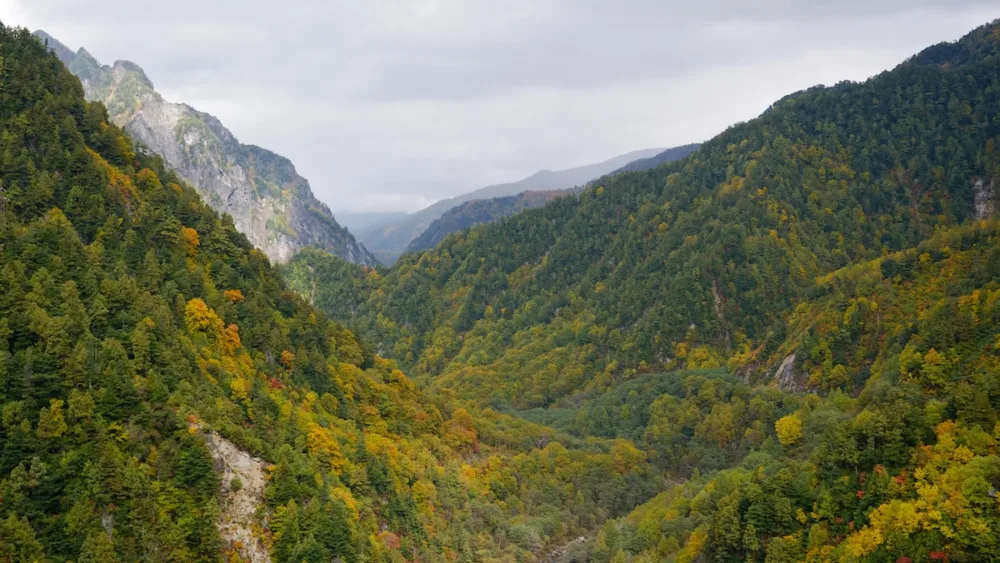
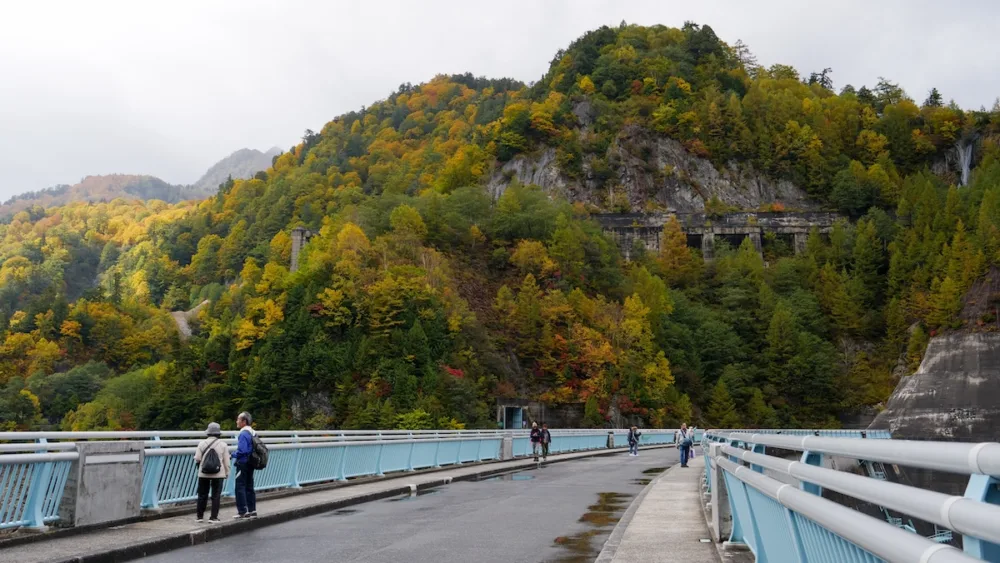
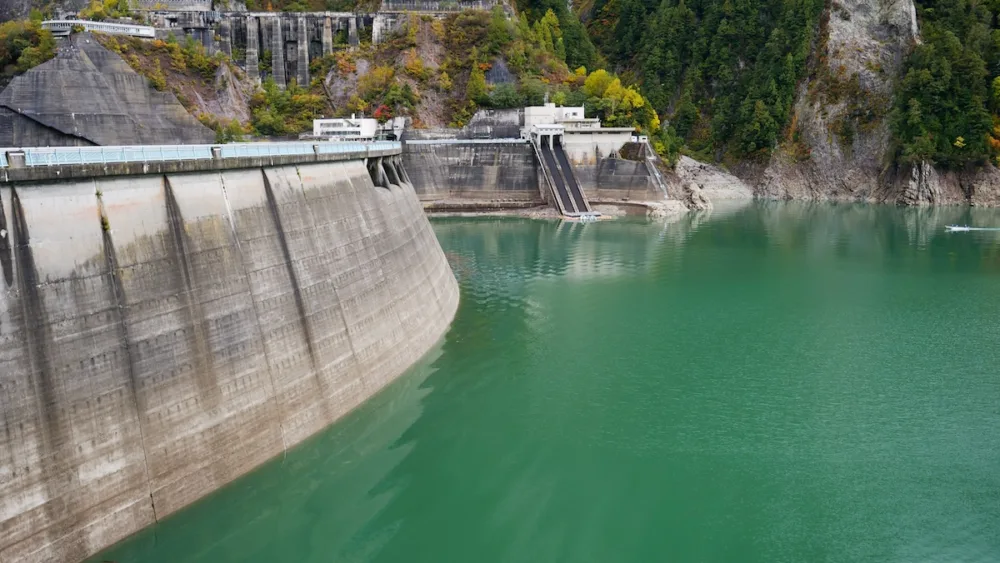
Cross Kurobe Dam on foot – 15 minutes
We then reached the point in the journey where we had to cross the Kurobe Dam using our own two feet!
The Kurobe Dam is an 186-metre arched dam and the tallest dam in all of Japan. It was built between 1956 and 1963.
Between late June and mid-October, the Kurobe Dam releases waters from its spillway, so this is a popular time of year to visit.
There’s actually quite a bit to see and do at Kurobe Dam, so you may want to give yourself a bit of time here. For a panoramic view of the dam and its surroundings, you can climb the flights of stairs that lead up to an observation deck (it’s 220 steps to the top!).
Alternatively, you may want to join one of the sightseeing boat rides on Kurobe Lake. You can also make time to visit the Kurobe Dam Museum or grab a bite of food at one of the restaurants.
We skipped the boat ride because we still had a bit of a journey ahead of us and we wanted to make it to Nagano City before dark, but there’s plenty to do here.
Kanden Tunnel Electric Bus – 16 minutes
This brings us to our next mode of transportation: riding the Kanden Tunnel Electric Bus from Kurobe Dam to Ogizawa Station.
Ogizawa Station marks the end of the official Alpine Route, however, you can then continue onwards to Shinano Omachi (if you used the luggage forwarding service) or Nagano Station to end your trip.
The Kanden Tunnel Electric Bus was a 16-minute journey where we travelled 6.1 kilometres with an elevation change of 37 metres.
Since we had a bit of time before we could catch the next local bus to Shinano to pick up our luggage, we decided to grab some food inside the station. They had some nice Tonkatsu and curries on the menu, so it’s a good option if you’re getting hungry at this point in the journey!
Bus to Nagano – 105 minutes
There are two ways to reach Nagano from Ogizawa Station. If you forwarded luggage in the morning, you’ll have to do the journey in two steps.
First, you’ll need to catch a local bus to Shinano Omachi (40 minutes), where you’ll be able to pick up your luggage at the office directly across the train station. Once you have your luggage, you’ll need to catch another from Shinano Omachi to Nagano Station (65 minutes). This is what we had to do.
If you are travelling light as a feather and have no luggage to retrieve, then you can catch an express bus from Ogizawa Station to Nagano Station.
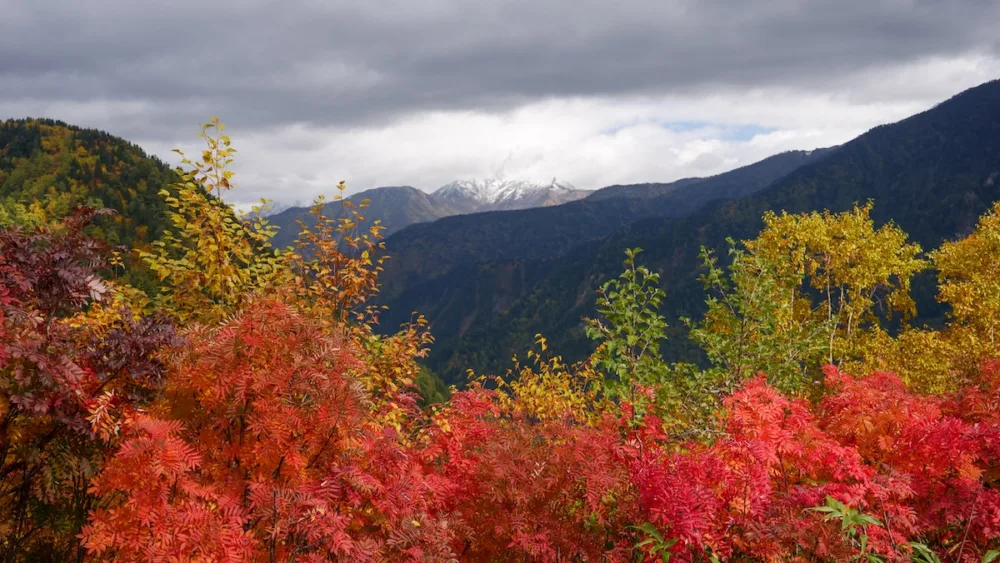

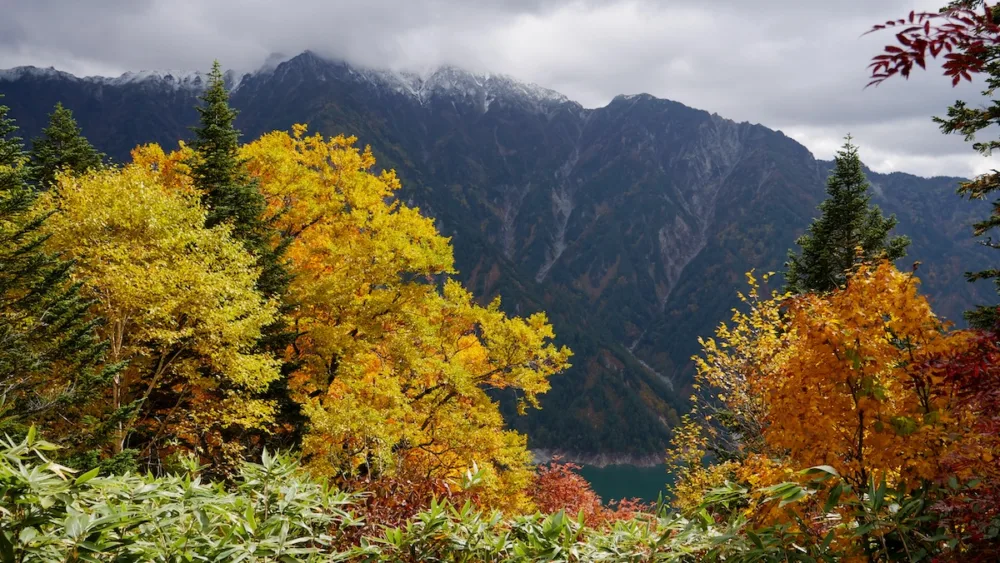
Tateyama Kurobe Alpine Route in Autumn
We travelled the Tateyama Kurobe Alpine Route in autumn and it was everything we hoped it would be! Not only was the journey loads of fun as we got to ride different modes of transportation, but we were also treated to ever-changing scenery, peak foliage on the ropeway ride, and we got to experience 3 seasons in one day!
We did this journey in mid-October (October 16 to be precise), so this is a taste of what you can expect this time of year. The forecast can slightly vary from year to year, so it might be worth looking at the foliage calendar to see when the colours are about to pop.
Lastly, autumn is a wonderful time to travel around the Japanese Alps and I would recommend sticking around to visit a few more destinations in the area.
We really enjoyed our visit to Takayama (so much so that we’ve been twice!), a day trip to Shirakawa-go to see the farmhouses is well worth it, and maybe you can even tack on a quiet nature escape to Norikura.
Making the Most of the Tateyama Kurobe Alpine Route: Essential Tips & FAQs
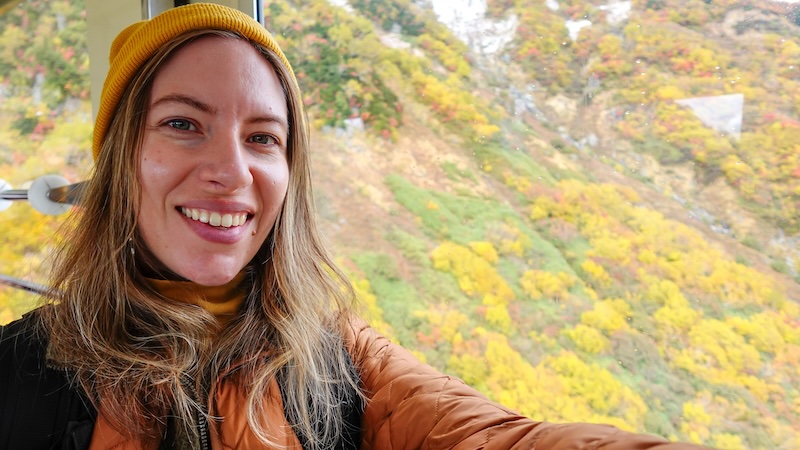
Top Tips for Planning Your Alpine Route Journey
Let’s dive into the nitty-gritty—these are the details that’ll make your day much smoother (and way more fun):
1. Start Early (and Pace Yourself)
The full Alpine Route takes 8–9 hours if you want to do it justice and linger at scenic spots. Start as early as possible—especially during peak autumn foliage or the snow wall season when crowds can swell. Early departures mean you’ll have more flexibility, less stress about tight connections, and better photo ops without throngs of travelers in the background.
2. Consider Overnighting on the Route
Most travelers do the Alpine Route as a single, full-on day trip. But if you’re a hiking enthusiast, photographer, or simply someone who loves the mountains, consider spending a night at Hotel Tateyama or Midagahara Hotel. Watching the sunrise or sunset from the roof of Japan, soaking in an onsen at altitude, and exploring alpine trails with hardly another soul in sight? Pure magic.
3. Pack Like a Pro
Weather on the Alpine Route changes fast—sometimes you’ll experience everything from warm sunshine to snow flurries in a single afternoon. Here’s what you’ll want to have handy:
- Layers: T-shirt, fleece, windbreaker or light down jacket
- Hat and gloves: Even in spring/autumn, it can get chilly, especially at Murodo
- Sturdy shoes: For easy hikes and stairs around the dam and lookouts
- Sunscreen and sunglasses: High altitude = strong UV rays!
- Snacks and water: There are shops and eateries at major stops, but lines can be long at peak times
- Camera/phone charger: You’ll take a million photos, trust me!
4. Cash is King
Many small restaurants and souvenir stalls along the route are cash only. Be sure to bring enough Japanese yen for lunch, snacks, souvenirs, and unexpected treats (hello, soft-serve ice cream and hot, steamy buns!).
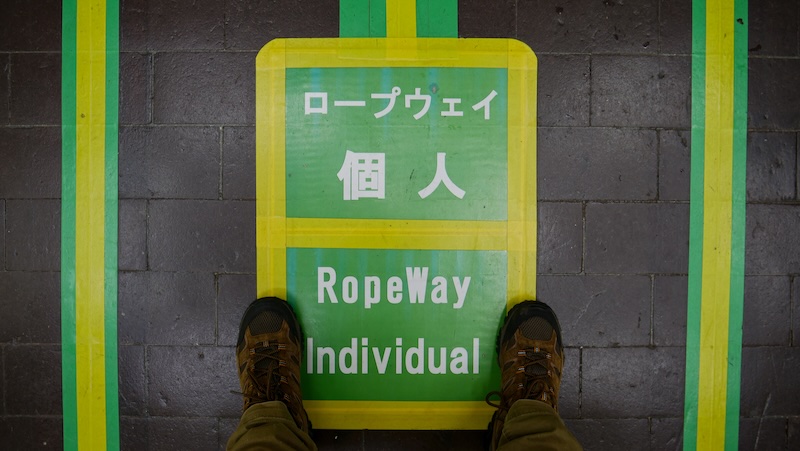
How to Maximize Each Stop on the Alpine Route
Toyama Chiho Railway to Tateyama Station
Start your adventure watching the landscape shift from urban cityscape to lush, river-threaded countryside. Grab a window seat for the best views.
Murodo Plateau
The highlight for many! At 2,450 meters, Murodo is the highest station and home to the famous Snow Corridor (Yuki-no-Otani) in spring. In autumn, the plateau transforms into a sea of gold, crimson, and green. This is also a hiker’s paradise—short walks to volcanic hot springs, alpine ponds, and, if you’re ambitious, the summit of Mt. Tateyama.
Tateyama Ropeway & Daikanbo
This stretch is the panoramic highlight. The ropeway’s lack of supporting pylons means unobstructed views of the mountains, valley, and fall colors. Daikanbo’s viewing terrace is made for wide-angle shots—give yourself a little extra time here, even if it means waiting for the next cable car.
Kurobe Dam
Not only Japan’s tallest dam but also a testament to human ingenuity (and perseverance—over seven years and many challenges to build it). If you’re lucky, catch the dramatic water discharge from late June to October. It’s seriously powerful! Walk the length of the dam, take in the emerald waters, and climb up for a panoramic view. There’s even a small boat cruise on Kurobe Lake if you want a different vantage.
Rapid Fire Info
How long do I need for the route?
If you want to simply transit from start to finish, you could “rush” it in 6–7 hours, but you’d miss most of the magic. Plan at least 8–9 hours, or break it up with a stay on the route.
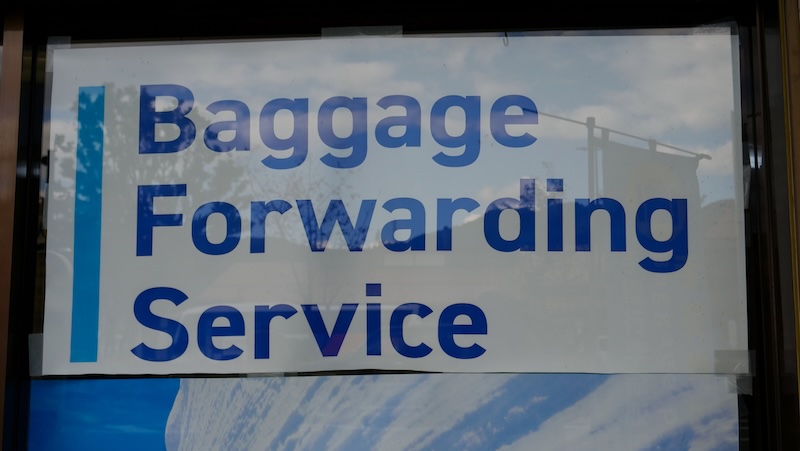
Can I store my luggage?
Yes! The baggage forwarding service is a lifesaver. If you’re traveling one-way (especially with suitcases), don’t hesitate—it’s worth every yen.
Is it suitable for children or seniors?
Absolutely, though some sections have lots of stairs (like the dam observation points) and there’s a fair bit of walking. For less-mobile travelers, take your time, use elevators where available, and skip longer hikes.
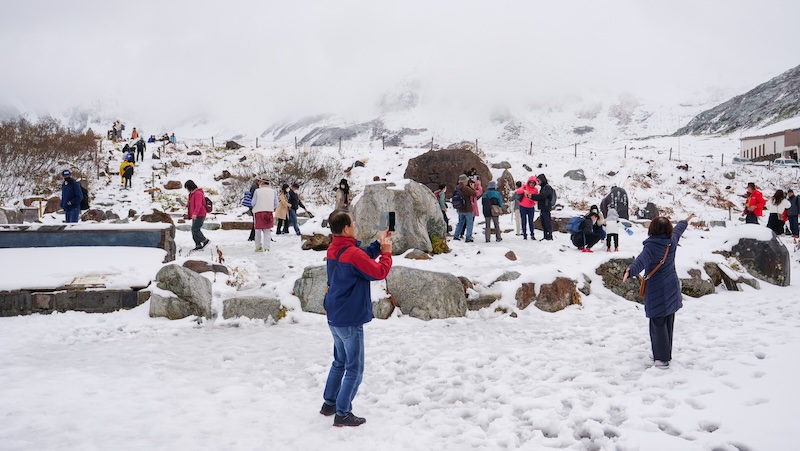
What if the weather is bad?
The route runs rain or shine, and even fog can create an atmospheric mood. But always check forecasts for closures, especially late in the season.
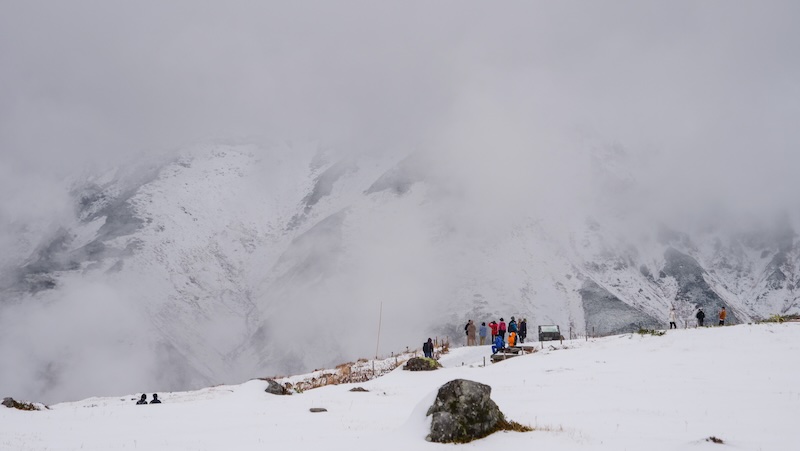
When’s the best time to visit?
- Late April–June: Snow walls + spring mountain scenery
- Mid-July–September: Lush green, wildflowers, and clear skies
- Late September–mid-October: Stunning fall foliage (my personal favorite!)
- Late October–November: Crisp air, fewer crowds, snow-dusted peaks
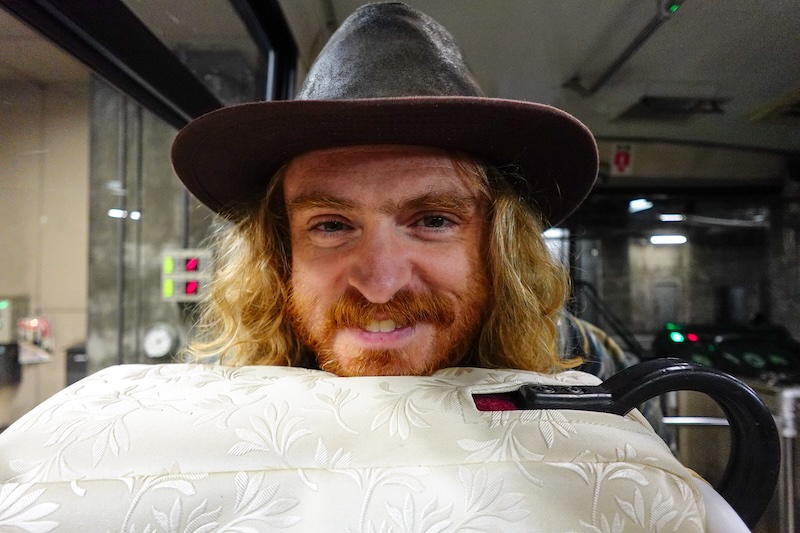
Smart-Pack Checklist (One-Day Crossing)
| Must-Bring | Why it matters | Pro hack |
|---|---|---|
| 10 L day-pack | Free hands on ladders, easy to squeeze under seats. | Choose one with a chest strap – you’ll be on standing-room cable cars. |
| Layers (base + fleece + windbreaker) | You’ll swing from 32 °C rice fields to sub-zero snow at 2,450 m. | Pack a lightweight down vest; stuffs into its own pocket. |
| Gore-Tex or sturdy trainers | The dam walkway can be puddly; Murodo trails may hold snow. | Tie shoes onto your pack on warm lower segments. |
| Sunglasses & SPF 50 | UV radiation increases ~10 % every 1,000 m. Snow glare is savage. | Clip sunnies inside the ropeway cabin for quick grab when doors open. |
| Cash (¥10,000 in small coins / notes) | Snack stalls, lockers and coin-op hot drinks = cash only. | Keep ¥100 coins handy for bathroom “washlet” fee at Ogizawa. |
| Suica / IC card | Vending machines, cafés at Murodo, and Shinano bus accept tap-pay. | Top up the night before – some rural machines won’t let you charge. |
| Power bank 10k mAh | You’ll shoot hundreds of photos + use translation and weather apps. | Air-Drop photos at rest stops and keep phone on Airplane Mode when no signal. |
| Thin gloves & beanie (Oct-Jun) | Windchill on the ridge and at Daikanbō lookout can hit –10 °C. | Touch-screen gloves = no frozen fingers while filming. |
| Eco-towel / buff | Summer humidity at lower stations or condensation in tunnels. | Can double as makeshift picnic mat. |

Photo-Op Hotlist (with GPS Pins)
| Stop | Exact spot | Best time | Angle to shoot | Notes |
|---|---|---|---|---|
| Bijodaira Station bridge | 36.5749° N, 137.5164° E | 09:30 – sun behind you | Frame cable-car exit + cedar canopy. | Mist often hovers for ethereal vibe. |
| Midagahara Wetlands | 36.5567, 137.5245 | 10:00-11:00 | Boardwalk S-curve into alpine marsh. | 30 min loop – watch wooden planks (slippery). |
| Mikurigaike Pond | 36.5753, 137.6114 | 11:30 | Peak reflection of Tateyama trio on calm days. | Polariser helps kill glare. |
| Daikanbō Upper Terrace | 36.5694, 137.6295 | 12:00-13:00 | Panoramic sweep of Kurobe Lake + serrated ridgeline. | Handheld pano > wide lens (less distortion). |
| Tateyama Ropeway south window | N/A (moving) | Midday – gondola centre | Shoot through glass; place lens hood flush to reduce reflection. | Gimbal not allowed – use phone stabilisation. |
| Kurobe Dam Staircase 6 | 36.5649, 137.6646 | 14:00 for rainbow | Water discharge + rainbow forms on sunny days. | 220 steps up – budget 10 min. |
| Autumn Foliage Tunnel (Oct) | Between Keyakidaira & Sadaira corners on bus | ~15:30 golden hour | Motion panning out bus window. | Sit driver’s side for best leaf wall. |
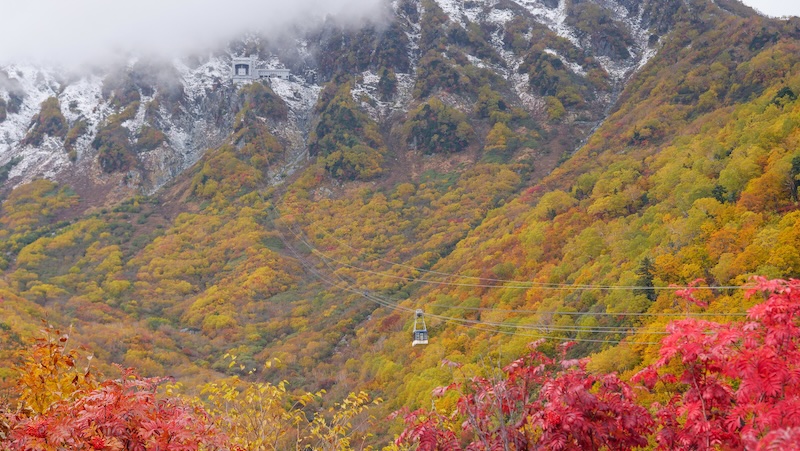
Seasonal Game-Plan Tweaks
| Season | Why go then | Route Tips | Clothing Extras |
|---|---|---|---|
| Spring (mid-Apr – late May) | Walk the Yuki no Ōtani snow corridor – walls over 15 m! | Pre-reserve Murodo–Bijodaira bus section (sells out). | Waterproof pants; reflectivity can sunburn legs. |
| Early Summer (Jun) | Alpine flowers blanket Midagahara; waterfalls peak with melt-water. | Monitor lightning alerts; storms roll fast. | Light rain shell & quick-dry socks. |
| High Summer (Jul-Aug) | Clear skies for Mt Tate summit hike + stargazing at 2,400 m. | Book Hotel Tateyama months ahead; sunrise tour departs 04:00. | Headlamp, ultralight down jacket for night sky. |
| Autumn (late Sep – Oct) | Fiery maples + golden birch at 1,400-2,000 m tier. | Crowds heavier: catch 07:00 Toyama train for first cable car. | Thermals & micro-spikes if early snow. |
| Shoulder-Winter (Nov to 30 Nov) | Frost-dusted peaks, quiet platforms. | Some shops close; pack own lunch. Last ropeway 15:20. | Insulated boots; pocket warmers. |
Tateyama Kurobe Alpine Route: 12-Question FAQ for Planning, Tickets, Seasons, Luggage & Route Tips
How long does the full Alpine Route take?
Plan for 8–9 hours if you want to enjoy viewpoints, short walks, and photo stops. You can sprint it in ~6–7 hours, but you’ll miss the best bits like Daikanbō’s terrace and the dam lookouts.
When is the Tateyama Kurobe Alpine Route open?
It’s a seasonal crossing. The route operates April 15–November 30 and closes December 1–April 14 due to heavy snow. Spring brings the famous snow corridor; late autumn can be frosty but quiet.
Which direction should I travel—Toyama ➜ Ogizawa or Ogizawa ➜ Toyama?
Both work well. We did Toyama to Ogizawa (continuing on to Nagano) and loved the build-up from rivers and forests to high alpine, then the grand finale at Kurobe Dam. If your onward trains are Nagano-bound, finishing in Ogizawa is convenient.
What are my ticket options?
You have three solid paths:
- Buy online via the official site (Japanese interface; name fields may require Katakana).
- Same-day tickets in person (arrive before windows open—especially during foliage and snow-wall seasons).
- Join a guided day tour (great in spring for the snow walls; tickets bundled, no logistics stress).
Do I need to reserve each transport segment?
Not if you’re buying same-day through-tickets and traveling steadily, but peak dates can see queues. Build buffer time at Murodo and Daikanbō, and be willing to take the next ropeway or bus if you linger at viewpoints.
Is one-way travel easy—and what about my luggage?
Yes. One-way is common. Use the baggage forwarding service so you’re not juggling suitcases on seven different rides. We sent ours from Dentetsu-Toyama to Shinano-Ōmachi for ¥3,000 per bag and picked them up near the end—totally worth it.
What’s the best season to go?
- Mid–late April to June: Snow corridor + spring scenery.
- July–September: Clear skies, flowers, best shot at Tate summit hikes.
- Late Sept–mid-Oct: Peak autumn foliage (our favorite!).
- Late Oct–Nov: Quiet, crisp, snow-dusted ridgelines.
Each season shines differently—match your gear and start times accordingly.
What should I pack for a one-day crossing?
Layers (base + fleece + wind/warmth layer), sturdy footwear, hat & thin gloves (spring/autumn), sunglasses & SPF, snacks & water, and a power bank. Weather shifts fast: you can experience three seasons in a single day.
Can I stay overnight on the route?
Absolutely. Hotel Tateyama (Murodo) and Midagahara Hotel turn the route into an alpine mini-break with dinner, breakfast, and onsen access. Nights bring starry skies and sunrise views—book far ahead in peak windows.
Is the route suitable for kids and seniors?
Yes, with smart pacing. Expect walking, stairs (e.g., dam viewpoints), and some line-ups. Use elevators where available, skip longer hikes, and give yourselves extra time at transfer points.
Will I find food and ATMs along the way?
Major stations have eateries (think curry, tonkatsu, café fare) and shops. Bring cash—some stalls and lockers are cash-only. We also carry snacks to avoid lines during peak periods.
Any photography “don’t-miss” spots?
Yes! Daikanbō terrace (panoramas), Tateyama Ropeway cabins (glass-to-lens shots), Mikurigaike Pond (alpine reflections), and Kurobe Dam (watch for rainbows during water discharge, late June–mid-October). Give yourself time to linger.
